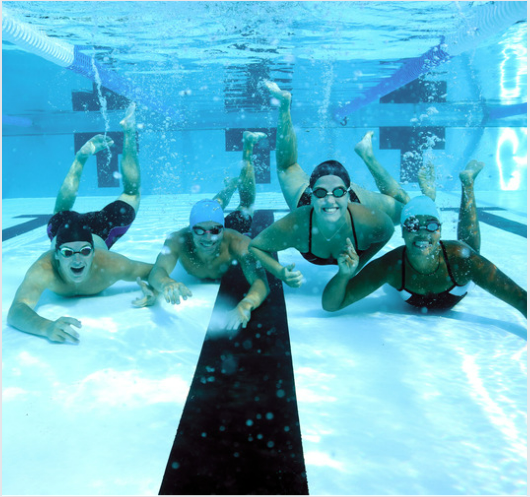How to Prevent Swimming Shoulder Injuries

Swim Tips, Safety, Swim Technique, Swimming Injuries
|
April 20, 2014
 We've heard it before, swimming is a non-contact sport, swimming is great for rehab, or even *gasp* you can't injure yourself swimming. False, false, false. I'm not saying every swimmer is destined to face injury, however, it is much more likely if you don't take preventative steps. Communicate concerns with your coaches, ice, and be informed.
The most common swimming injury faced by swimmers are shoulder injuries. Rotator cuff issues, tendonitis, and stress fractures are not uncommon. I've dealt with them all.
We've heard it before, swimming is a non-contact sport, swimming is great for rehab, or even *gasp* you can't injure yourself swimming. False, false, false. I'm not saying every swimmer is destined to face injury, however, it is much more likely if you don't take preventative steps. Communicate concerns with your coaches, ice, and be informed.
The most common swimming injury faced by swimmers are shoulder injuries. Rotator cuff issues, tendonitis, and stress fractures are not uncommon. I've dealt with them all.
Rotator Cuff Injuries
A rotator cuff injury involves muscles and tendons that surround your shoulder joint. Those muscles and tendons can become inflamed resulting in a constant dull ache. More severe injuries to the rotator cuff, like tears, may result in surgery or shots. The good news is you can take care of most minor rotator cuff issues by being proactive.Rotator Cuff Exercises
Performing rotator cuff exercises with small hand weights is a must for any swimmer, regardless of whether they are rehabbing or preventing an injury. In reality doing them daily takes less than 10 minutes, a small investment in time compared to your overall time spent training. In most cases, a three to five pound hand weight or a medium gauge length of surgical tubing is sufficient. If you are using surgical tubing, you can perform exercises by either standing on the middle of your tubing or wrapping it around a pole.Raises
Raises: Begin with your hands at your side holding your weights. If you are using tubing, stand on the middle and hold one end in each hand. With your pinkies up and your thumbs down, raise your straight arm to shoulder height and lower. Never let your arms snap back to your sides. To reap the full benefits of this exercise, you must control both up and down motions. There are two directions (side and front) in which to perform this exercise, but never go past shoulder height. Concentrate on the contracting of muscles around your shoulder blades and visualize them drawing together. Repetitions: 10 reps of side raises and front raises with each arm.Inward & Outward Rotators
For the next exercise hand weight users will need to lie on the ground on their side. Tubing users will be standing utilizing a pole. Whether on the ground or standing, the elbow must maintain constant contact with your side. Allowing your elbow to float away from your body negates the benefits of this exercise. Hand weight users will be one directional with this exercise, in a controlled motion (no flinging) lower your weight to the ground so your forearm runs parallel with it, then raise until your forearm until it is perpendicular to the ground, pointing straight up in the air. Tubing users, wrap your tubing around a pole and hold both ends in one hand. Outward: Keeping your elbow in contact with your side, begin with your fist holding the tubing pointing towards the pole and crossing your midsection, step away to increase the intensity of the exercise. The shoulder not in use is closest to the pole. Now slowly bring your fisted hand away from the pole as far as you can while maintaining elbow contact. Inward: To reverse this exercise do a half turn with your body. Your elbow will still be at your side, and your hand fisting the tubing will still be pointed towards the pole, but now the shoulder not in use will be opposite the pole. Repeat.Tendonitis
Tendonitis is the inflammation of muscles and tendons often results from ignored/untreated rotator cuff injuries. Tendonitis can feel like a biting or stabbing pain and often result in lost pool time. My annual bout with tendonitis arrived during Christmas training. However, I could prevent lost pool time by being proactive in the weeks leading up to increased yardage.Preventing Tendonitis:
- Frequent icing
- Massages
- Muscle stimulation therapy helped considerably.








Leave a Comment
Your email address will not be published. Required fields are marked *